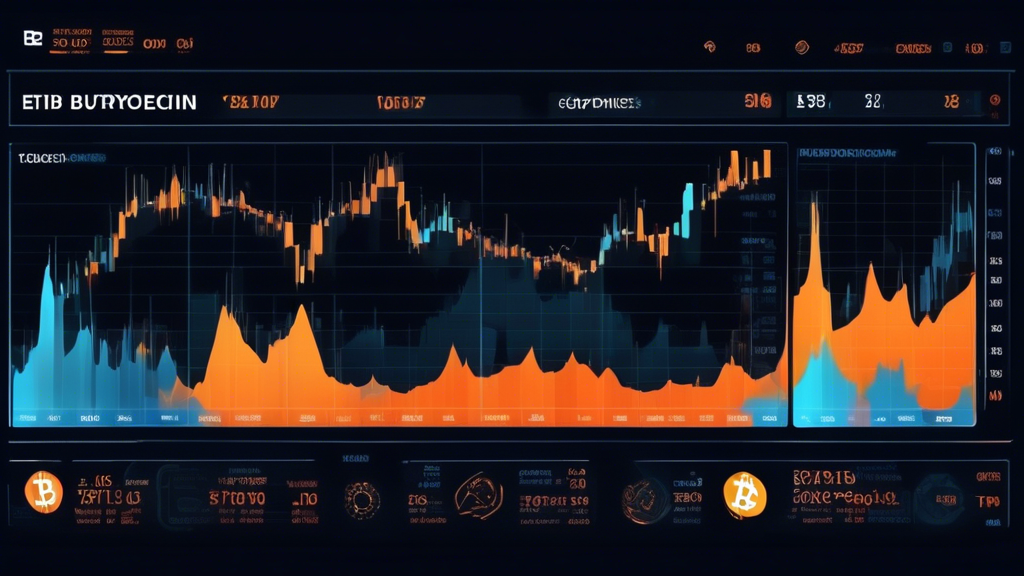Introduction to Forex Trading with Cryptocurrency
Understanding the Basics: A Brief Overview of Forex and Cryptocurrency
Forex trading, or foreign exchange trading, involves buying and selling currencies on the global market. It’s one of the largest and most liquid markets, with daily trading volumes exceeding $6 trillion. Cryptocurrency, on the other hand, is a digital or virtual form of currency that uses cryptography for security. Unlike traditional currencies, cryptocurrencies operate on decentralized platforms using blockchain technology.
The Merging Worlds: How Cryptocurrency is Changing Forex Trading
The integration of cryptocurrency into forex trading has revolutionized the financial landscape. By allowing traders to use digital currencies for currency pairs exchanges, forex trading with cryptocurrency offers a new level of flexibility and opportunity. The decentralized nature of cryptocurrencies ensures faster transactions and lower fees, making them an attractive option for forex traders looking to optimize their strategies.
Key Benefits of Using Cryptocurrency in Forex Trading
Utilizing cryptocurrency in forex trading brings several advantages. Firstly, transactions are typically completed faster and at a lower cost compared to traditional banking methods. Additionally, the volatile nature of cryptocurrencies can offer significant profit opportunities. Furthermore, trading with cryptocurrencies allows for greater anonymity and can eliminate the need for intermediaries, leading to a more direct and efficient trading process.
Introduction to Forex Trading with Cryptocurrency
Understanding the Basics: A Brief Overview of Forex and Cryptocurrency
Foreign exchange trading, commonly referred to as Forex or FX trading, is the global marketplace for exchanging national currencies against one another. With a daily turnover of more than $6 trillion, it’s the largest financial market in the world. Forex trading involves buying one currency while simultaneously selling another, with an aim to profit from fluctuations in exchange rates.
On the other hand, cryptocurrency is a digital or virtual form of currency that uses cryptography for security. Unlike fiat currencies, cryptocurrencies operate on decentralized systems, typically using blockchain technology. Bitcoin, Ethereum, and Ripple are some well-known examples of cryptocurrencies. These digital assets have gained immense popularity over the last decade, contributing to an evolving landscape in the financial markets.
The Merging Worlds: How Cryptocurrency is Changing Forex Trading
The integration of cryptocurrencies into Forex trading is fundamentally changing the landscape of financial markets. Cryptocurrencies offer a new, decentralized trading vehicle that operates independently of traditional banking systems, introducing increased flexibility and new opportunities for traders.
One significant way cryptocurrency is changing Forex trading is through the introduction of crypto pairs. Instead of trading conventional forex pairs like EUR/USD or GBP/JPY, traders can now engage in pairs like BTC/USD or ETH/EUR. This diversification helps mitigate risk and allows for potentially higher returns due to the volatile nature of cryptocurrencies.
Moreover, the 24/7 operating nature of cryptocurrency markets complements the near-constant activity of Forex, allowing traders the freedom to trade at any time, regardless of traditional market hours or geopolitical events. The use of cryptocurrency in Forex trading also provides enhanced privacy and security due to the cryptographic technologies underlying these digital assets.
Key Benefits of Using Cryptocurrency in Forex Trading
There are several compelling benefits to using cryptocurrency in Forex trading. Here are some of the most notable advantages that can give traders an edge in the financial markets:
Enhanced Security and Privacy
Cryptocurrencies make use of blockchain technology, which offers robust security features that help prevent fraud and unauthorized transactions. This added layer of security is invaluable in Forex trading where the protection of funds is a top priority.
Lower Transaction Costs
Traditional Forex transactions often involve several intermediaries such as banks and brokers, each taking a slice of the transaction fee. Cryptocurrencies eliminate the need for many of these intermediaries, resulting in lower transaction costs.
Faster Transactions
Using cryptocurrencies can significantly speed up the process of executing trades. Unlike traditional banking systems which might take several days to process international transactions, crypto transactions are often completed within minutes.
Decentralized Trading
The decentralized nature of cryptocurrency means there is no single point of failure or control. This prevents issues related to central banking policies and fosters a more open and transparent trading environment.
Expanded Market Access
Cryptocurrencies have shattered the limitations enforced by traditional fiat money systems, enabling traders from any part of the world to participate in Forex trading. This democratization of financial markets provides a broader pool of participants and enhanced liquidity.
As the world of financial trading continues to evolve, the merging of Forex and cryptocurrency markets presents unprecedented opportunities. By understanding the basics, the transformative impact, and the key benefits, traders can position themselves to harness the full potential of these two powerful financial instruments. This synergy opens the door to innovative trading strategies and a future of infinite financial possibilities.
How to Get Started in Forex Trading with Cryptocurrency
Choosing the Right Cryptocurrency for Forex Trading
Getting started in forex trading with cryptocurrency involves first selecting the right digital currency for your trades. With numerous cryptocurrencies available in the market, making an informed choice is crucial. Bitcoin (BTC) and Ethereum (ETH) are often popular among traders due to their high liquidity and widespread acceptance. However, other cryptocurrencies like Ripple (XRP) and Litecoin (LTC) can also provide viable trading options depending on your strategy and risk tolerance.
Consider factors such as market capitalization, trading volume, and historical performance. Analyze how these cryptocurrencies have performed in the forex market to determine their stability and profitability. Prioritize cryptocurrencies that have robust security features and are supported by reputable exchanges to minimize the risk of fraud or hacking.
Setting Up Your Forex and Cryptocurrency Trading Accounts
Once you have chosen your preferred cryptocurrency, the next step is to set up your trading accounts. Start by selecting a reputable forex broker that accepts cryptocurrencies. Ensure the broker is regulated by an authoritative body to provide a layer of security and credibility to your trading activities.
Next, create a cryptocurrency wallet to store your digital assets securely. This wallet can be either a hardware wallet, which provides offline storage, or a software wallet, which allows for easier access and transactions. Sync your wallet with your trading account to facilitate seamless deposits and withdrawals. Additionally, consider using multi-signature wallets for enhanced security.
Many forex brokers offer demo accounts that allow you to practice trading with virtual funds. Utilize these demo accounts to familiarize yourself with the trading platform, test strategies, and understand the dynamics of forex trading with cryptocurrency before committing real money.
Essential Tools and Resources for Successful Crypto-Forex Trading
Equipping yourself with the right tools and resources is essential for success in forex trading with cryptocurrency. Below are some key tools and resources to consider:
- Trading Platforms: Choose a trading platform that not only supports forex trading with cryptocurrency but also offers advanced charting tools, real-time market data, and analytical features. Popular platforms include MetaTrader 4, MetaTrader 5, and TradingView.
- Market Analysis Tools: Leverage technical analysis tools to study price movements, identify trends, and make informed trading decisions. Tools such as moving averages, candlestick patterns, and Bollinger Bands can provide valuable insights into market behavior.
- Economic Calendars: Keep track of major economic events and announcements that can influence forex and cryptocurrency markets. Economic calendars provide timely updates on interest rate decisions, economic indicators, and geopolitical developments.
- News Aggregators: Stay informed about the latest news and developments in both the forex and cryptocurrency markets. Reliable news sources like Bloomberg, Reuters, and CoinDesk can help you keep abreast of market trends and make timely trading decisions.
- Risk Management Tools: Use stop-loss and take-profit orders to manage your risk and protect your investments. These tools automatically close your trades at predetermined price levels, helping you minimize losses and secure profits.
By strategically integrating these tools and resources into your forex trading with cryptocurrency, you can enhance your trading experience, mitigate risks, and improve your chances of success. Remember that education and continuous learning are key to mastering the complexities of forex and cryptocurrency trading. Explore online courses, join trading forums, and engage with the trading community to expand your knowledge and stay updated on best practices.
Strategies and Best Practices for Forex Trading with Cryptocurrency
Popular Trading Strategies: Scalping, Day Trading, and HODLing
Engaging in forex trading with cryptocurrency necessitates a solid understanding of various trading strategies to maximize potential returns and minimize risks. Whether you are a novice or an experienced trader, it’s imperative to find a strategy that aligns with your risk tolerance, investment goals, and market conditions.
Scalping: Scalping is a popular trading strategy among traders who prefer quick, small profits over extended periods. This method involves making numerous trades within a single day, capitalizing on minor price movements. When engaging in scalping, traders must exercise constant vigilance to identify short-term opportunities in both the forex and cryptocurrency markets. Given the volatile nature of cryptocurrencies, scalping can be particularly lucrative but also risky, requiring precise execution and swift decision-making.
Day Trading: Unlike scalping, day trading involves buying and selling financial instruments within the same day, but the trades generally last a few hours rather than minutes. Day trading requires a good grasp of both forex and cryptocurrency market dynamics, as traders need to interpret market indicators and historical data to predict short-term price movements. This strategy is ideal for those who can dedicate significant time daily to monitor markets and execute trades.
HODLing: The term ‘HODL’ originated from the misspelling of ‘hold,’ and refers to a long-term investment strategy where traders buy and retain assets regardless of market fluctuations. For those engaging in forex trading with cryptocurrency, HODLing can serve as an effective way to mitigate the market’s inherent volatility. This strategy is best suited for investors with a higher risk tolerance and long-term financial objectives, allowing them to capitalize on substantial market upswings.
Risk Management Techniques: Protecting Your Investments in Volatile Markets
Given the high volatility often associated with both forex and cryptocurrency markets, it’s crucial to implement sound risk management techniques. Proper risk management can help protect your investments and enhance overall trading success.
Stop-Loss Orders: Placing stop-loss orders is a fundamental risk management strategy for forex trading with cryptocurrency. These orders automatically sell a position at a predetermined price, preventing further losses if the market moves unfavorably. Establishing stop-loss levels helps traders minimize potential losses and secure profits.
Diversification: Diversification is a keystone principle for mitigating risk. By spreading investments across different currencies and cryptocurrencies, traders can reduce exposure to a single asset’s adverse price movements. A well-diversified portfolio balances the risk and can provide more stable returns.
Position Sizing: Position sizing is the process of determining the amount of capital to allocate to a single trade. Proper position sizing based on account size and risk tolerance is essential when engaging in forex trading with cryptocurrency. Avoiding oversized positions minimizes the impact of any single losing trade on the overall portfolio.
Risk-Reward Ratio: Assessing the risk-reward ratio before entering a trade is a hallmark of prudent trading. This involves comparing the potential profit of a trade to its potential loss. A good practice is to aim for a risk-reward ratio of at least 1:2, meaning the expected return should be at least twice the potential risk. This helps ensure that occasional losses are outweighed by more significant wins.
Staying Informed: How to Keep Up with Forex and Cryptocurrency Market Trends
Maintaining up-to-date knowledge of the latest market trends is crucial in forex trading with cryptocurrency. Market conditions, news events, and technological advancements can significantly impact the markets, making information a trader’s most valuable asset.
Utilize Financial News Platforms: Regularly consult reputable financial news platforms to stay informed about global economic developments, regulatory changes, and major market events. Platforms like Bloomberg, Reuters, and CoinDesk provide real-time updates essential for making informed trading decisions.
Technical Analysis Tools: Leveraging technical analysis tools can help traders predict future price movements based on historical data. Tools such as moving averages, relative strength index (RSI), and candlestick charts can provide critical insights into market trends and assist in identifying optimal entry and exit points.
Join Trading Communities: Engaging in online trading communities, forums, and social media groups can provide additional insights and diverse perspectives. Platforms like Reddit, Twitter, and Telegram have active communities of traders sharing analyses, strategies, and news relevant to forex trading with cryptocurrency.
Follow Influential Analysts and Traders: Following expert analysts and seasoned traders can offer new strategies and market insights. Many experienced traders share their knowledge on YouTube, podcasts, and blogs, providing valuable educational content and market analyses.
Continuous Education: Enrolling in courses, attending webinars, and reading books on forex and cryptocurrency trading can further enhance your knowledge and trading skills. Continuous education ensures that traders remain updated on new trading strategies, risk management techniques, and market analysis methods.
Conclusion: Embracing the Future of Forex Trading with Cryptocurrency
The integration of cryptocurrency into the realm of forex trading marks a transformative step in the financial landscape. By understanding the basics, selecting the appropriate cryptocurrencies, and employing strategic trading practices, traders can unlock new opportunities and leverage the benefits of enhanced security, lower transaction costs, and global accessibility.
Recap of Benefits and Opportunities
Throughout this journey, we have explored how cryptocurrencies are revolutionizing forex trading by offering several key advantages. From improved transaction speed and transparency to greater flexibility in trading hours, the synergy between these two financial domains opens a plethora of opportunities for today’s traders. The decentralized nature of cryptocurrency, combined with the expansive reach of the forex market, creates a robust environment that is ripe for innovation and growth.
The Path Forward: Continuous Learning and Adaptation
As we look to the future, it is crucial for traders to stay informed and adaptable. The rapidly evolving nature of both the forex and cryptocurrency markets requires a commitment to continuous learning and an openness to new technologies and strategies. By keeping abreast of the latest trends and developments, traders can better navigate the complexities of these dynamic markets and achieve long-term success.
In conclusion, forex trading with cryptocurrency presents a unique and compelling opportunity for traders willing to embrace change and leverage the advantages of this dynamic financial landscape. As the worlds of forex and cryptocurrency continue to merge and evolve, those who equip themselves with the right knowledge, tools, and strategies will invariably find themselves at the forefront of this exciting frontier.



